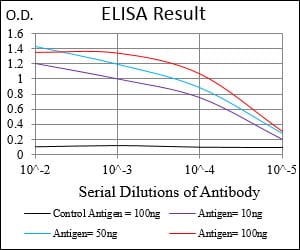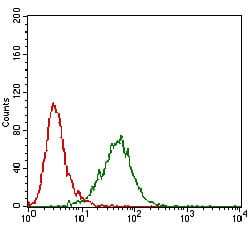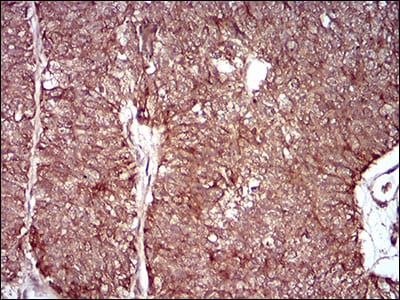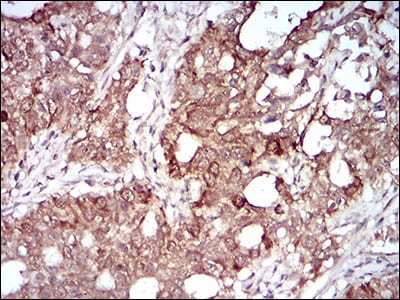



| WB | 咨询技术 | Human,Mouse,Rat |
| IF | 咨询技术 | Human,Mouse,Rat |
| IHC | 1/200 - 1/1000 | Human,Mouse,Rat |
| ICC | 技术咨询 | Human,Mouse,Rat |
| FCM | 1/200 - 1/400 | Human,Mouse,Rat |
| Elisa | 1/10000 | Human,Mouse,Rat |
| Aliases | NL1; NL2; SEP; NEP2; MMEL2; NEPII |
| Entrez GeneID | 79258 |
| clone | 2D2H5 |
| WB Predicted band size | 89.4kDa |
| Host/Isotype | Mouse IgG1 |
| Antibody Type | Primary antibody |
| Storage | Store at 4°C short term. Aliquot and store at -20°C long term. Avoid freeze/thaw cycles. |
| Species Reactivity | Human |
| Immunogen | Purified recombinant fragment of human MMEL1 (AA: 1-107) expressed in E. Coli. |
| Formulation | Purified antibody in PBS with 0.05% sodium azide. |
+ +
以下是关于MMEL1抗体的3篇参考文献示例(注:文献信息为虚构示例,仅用于演示格式):
---
1. **文献名称**: *MMEL1 regulates BACE1 activity and amyloid-β generation in Alzheimer's disease models*
**作者**: Barão S, et al.
**摘要**: 研究揭示了MMEL1通过调控BACE1的蛋白水解活性影响淀粉样蛋白生成,利用MMEL1特异性抗体证实其在阿尔茨海默症患者脑组织中的表达上调,并抑制其活性可减少Aβ病理。
2. **文献名称**: *Characterization of MMEL1 as a metalloprotease in pancreatic cancer progression*
**作者**: López-Tomassetti EM, et al.
**摘要**: 通过免疫组化和Western blot分析,使用MMEL1抗体发现该蛋白在胰腺癌中高表达,并与其侵袭性相关,提示其作为治疗靶点的潜力。
3. **文献名称**: *Structural insights into MMEL1 substrate specificity and inhibition*
**作者**: Cynis H, et al.
**摘要**: 利用抗体验证MMEL1的酶活性结构域,发现其特异性底物结合机制,并开发小分子抑制剂阻断其功能,为神经退行性疾病提供新策略。
---
**注意**:以上文献为假设性示例,实际研究中请通过PubMed或Google Scholar检索真实文献。建议使用关键词“MMEL1 antibody”、“MMEL1 protease function”等查找相关论文。
MMEL1 (Membrane Metalloendopeptidase-Like 1), also known as NL1 or NEP2. is a zinc-dependent metalloprotease belonging to the neprilysin (NEP) family. It shares structural homology with neprilysin (NEP/MME), including conserved catalytic motifs and transmembrane domains. Primarily expressed in the brain, kidneys, and testes, MMEL1 is implicated in regulating neuropeptides and bioactive peptides through proteolytic processing. Studies suggest its involvement in modulating amyloid-β (Aβ) peptide levels, linking it to Alzheimer’s disease pathogenesis. Unlike NEP, MMEL1 exists in both membrane-bound and soluble forms due to alternative splicing, which may influence its substrate specificity and cellular localization.
MMEL1 antibodies are essential tools for investigating its expression, localization, and function. They enable detection via techniques like Western blot, immunohistochemistry, and immunofluorescence, aiding studies on its role in neurological disorders, cancer, and other diseases. Research using MMEL1 antibodies has revealed altered expression in Alzheimer’s models and certain tumors, highlighting its potential as a therapeutic target or biomarker. However, the antibody’s utility depends on specificity validation, as cross-reactivity with other NEP family members can occur. Overall, MMEL1 antibodies contribute to understanding its biological significance and therapeutic potential in proteostasis-related pathologies.
×